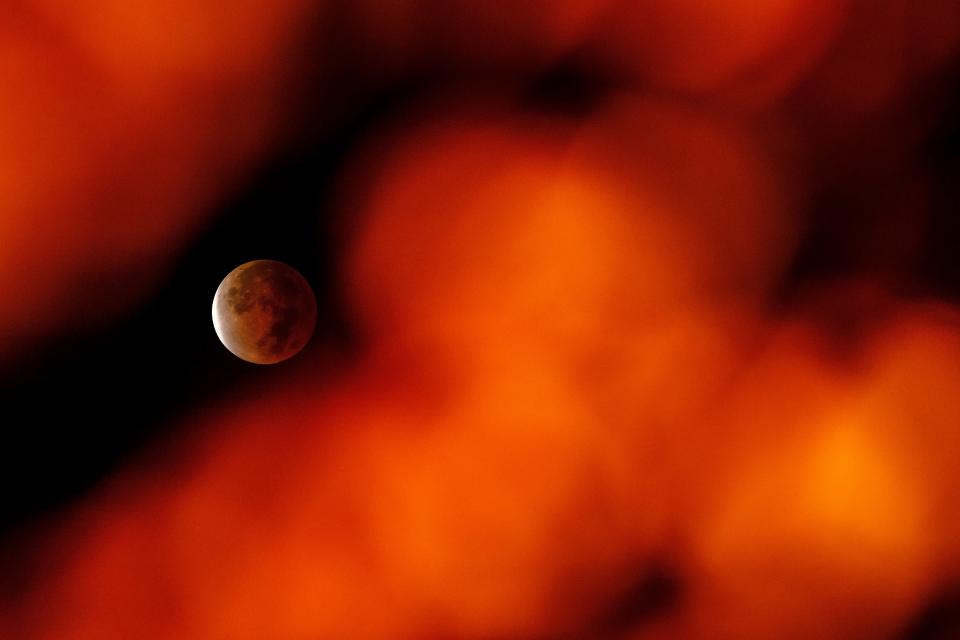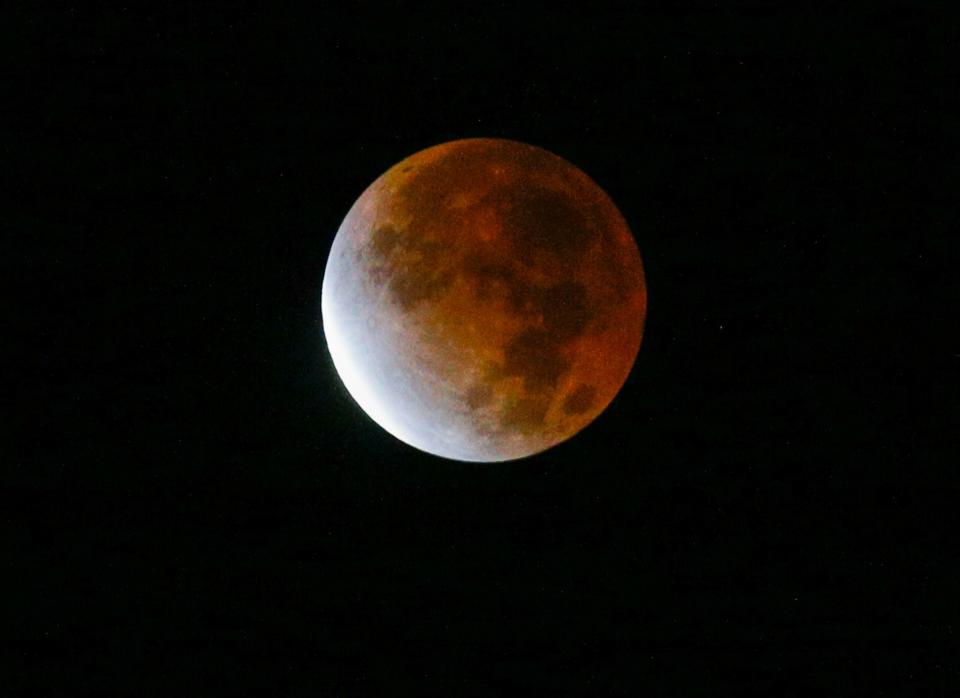Everything you need to know about 'beaver blood moon' lunar eclipse coming Tuesday
Before heading to the polls Tuesday, you may want to get up early and catch the latest sky event — the "beaver blood moon" lunar eclipse.
It's the first Election Day total lunar eclipse in U.S. history, according to EarthSky.org. And the next Election Day lunar eclipse won't happen for another 372 years, on Nov. 8, 2394.
Lunar eclipses occur when the sun, the Earth, and moon are in a straight line with Earth sitting in the middle, casting its shadow on the moon, according to Space.com.
When the Earth's shadow covers the moon, it often produces a red color, which is why lunar eclipses often get the nickname "blood" moon, reported USA TODAY. The coloration happens because a bit of reddish sunlight still reaches the moon's surface, even though it's in Earth's shadow.
The eclipse will be visible from North America and parts of South America, Asia, Australia and New Zealand.
Why is the lunar eclipse called a beaver moon?
Tuesday's event references the "beaver" moon, as it is a name given to the month's full moon. The name comes from the fact that this is usually the time of year when the animals hibernate for the winter, according to the Old Farmer's Almanac. November was also a time to trap beavers for the North American fur trade.
The full moon names used by the almanac come from a number of places, including Native American, Colonial American and European sources. Traditionally, each full moon name was applied to the entire lunar month in which it occurred, not solely to the full moon.
What time will the lunar eclipse be visible?

In Ohio, the event will begin around 4:45 a.m. with a partial eclipse, according to NASA. Totality of the moon will become visible at 5:17 a.m., lasting until 6:42 a.m. By 7:14 a.m., the partial eclipse will appear once again until the end of the spectacle at 8:05 a.m.
How will I be able to see it?
You don't need special glasses to view a lunar eclipse, unlike a solar eclipse, so feel free to stare directly at the moon, said USA TODAY.
Folks who live in the western U.S. will have the best view of the full eclipse, while those in the central and eastern parts of the country will see the eclipse just before the moon sets below the horizon.
What will the weather be like?
Weather conditions are expected to be favorable for viewing throughout the state.
In the Columbus and Cincinnati areas, Monday night and early Tuesday morning will be mostly clear, with temperatures between 45 and 48 degrees, according to the National Weather Service. Conditions are also expected to be mostly clear in the Akron area, with temperatures around 41 degrees.

USA Today reporter Doyle Rice contributed to this article.
mwalker@dispatch.com
@micah_walker701
This article originally appeared on The Columbus Dispatch: What you need to know about Election Day lunar eclipse

